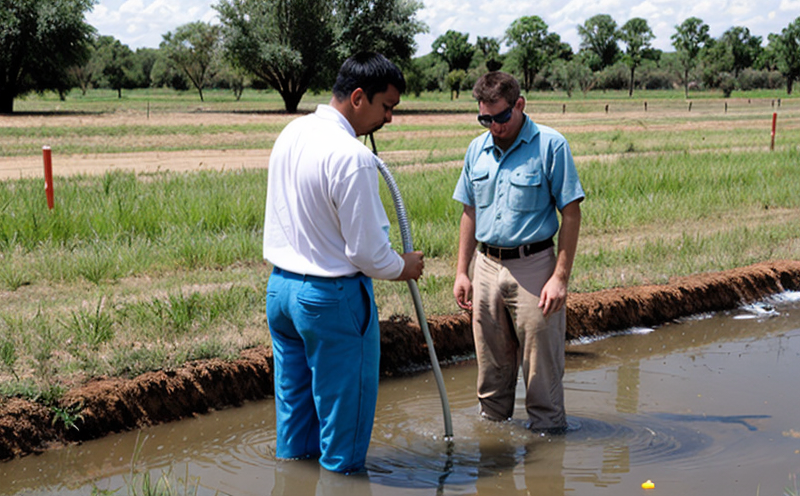ISO 5667-3 Preservation and Handling of Groundwater Samples Test
The ISO 5667-3 standard is a crucial tool in ensuring that groundwater samples are preserved and handled accurately, thereby maintaining the integrity of analytical results. This standard provides detailed guidelines for the collection, preservation, and handling of groundwater samples to prevent contamination, degradation, or alteration before analysis. It is particularly important in environmental testing where accurate data can influence critical decisions regarding water quality, regulatory compliance, and public health.
The process begins with sample collection using appropriate containers that are free from contaminants. The correct choice of container depends on the specific parameters being measured, as outlined in ISO 5667-3. Containers must be made of materials that do not react with the water or its constituents. This is a critical step to avoid introducing biases into the results.
Once collected, samples are preserved using chemical fixatives if necessary and shipped to the laboratory for analysis as soon as possible. The standard specifies temperature ranges and storage conditions to minimize changes in sample properties during transit. It also provides recommendations on how to handle samples that cannot be analyzed immediately upon arrival at the lab.
The preservation methods prescribed by ISO 5667-3 are designed to protect against various types of degradation, including biological, chemical, and physical changes. These methods ensure that the sample remains representative of its original state until it is ready for analysis. Compliance with these procedures helps laboratories meet stringent quality control requirements and ensures that any discrepancies observed in test results can be attributed to actual variations in water quality rather than procedural errors.
One key aspect of this testing process involves understanding what constitutes a 'representative' sample. According to ISO 5667-3, a representative sample is one that accurately reflects the characteristics of the population from which it was taken. Achieving representativeness requires careful sampling techniques and proper handling practices throughout the entire preservation chain.
The implications of non-compliance with these standards can be significant. Misleading or inaccurate test results may lead to improper management decisions regarding water resources, potentially resulting in environmental harm or public health risks. Therefore, adherence to ISO 5667-3 is not just a technical requirement but also a moral obligation when dealing with sensitive ecological issues.
To summarize, the preservation and handling of groundwater samples according to ISO 5667-3 are essential steps aimed at safeguarding the reliability and validity of analytical outcomes. By following these protocols meticulously, laboratories can contribute significantly towards maintaining high standards of environmental stewardship and compliance.
Applied Standards
| Standard Number | Description |
|---|---|
| ISO 5667-3:2019 | Water quality—Preservation and handling of water samples for chemical analysis |
Why Choose This Test
Selecting the appropriate method to preserve and handle groundwater samples is critical for obtaining accurate and reliable test results. By adhering strictly to ISO 5667-3, laboratories ensure they meet international best practices which are recognized worldwide by regulatory bodies.
- Avoids contamination risks that could skew analytical findings
- Ensures compliance with global quality assurance standards
- Reduces variability in results due to improper sample handling
- Increases confidence among stakeholders regarding the integrity of test data
These factors make ISO 5667-3 a preferred choice for laboratories aiming to establish robust environmental testing capabilities. It provides clear guidelines that guide professionals through each step of the sampling process, from initial collection to final analysis.
Moreover, using this standard helps organizations maintain consistent quality across different projects and locations, enhancing their reputation as reliable partners in environmental monitoring efforts. This consistency is particularly valuable when dealing with complex regulatory frameworks or large-scale initiatives involving multiple stakeholders.





